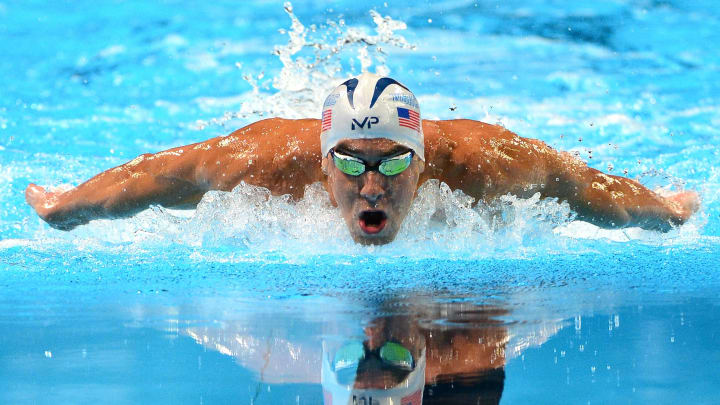Visualization
Think (visualize) before you act.

The mind doesn’t know the difference between a real event and an imagined event. Now, that may be hard to believe, but it gets worse; our brains fire up in the same way when we watch someone do something as when we do it ourselves, although to a slightly lesser degree.
So, when we “picture” something in our “minds-eye” we are, in fact putting ourselves through the same experience, cognitively speaking.

The minds eye
We visualize things for a variety of reasons, not least of which is to run a mental rehearsal of a future event where the behavior may be costly.
Sports psychologists have long realized the value of visualization in order to maximize performance. In fact, once a certain level of proficiency and skill is achieved, visualization is one of the most effective strategies used on elite athletes to get that extra something out of their performance.
When we visualize a desired outcome it boosts confidence, improves motivation, improves focus, increases strength, decreases reaction times and assists in practicing movement sequences. It has also been shown that visualization helps to re-wire our brains and make epigenetic changes (changes in our bodies caused by modification of gene expression rather than alteration of the genetic code itself) in our bodies.

Visalizing the run
The same principles are obviously applicable to everything we do where we want to increase our cognitive and general motivation. It only requires planning, practice, and preparation.
Visualization has both cognitive and motivational functions and can be specific or generalized in nature.
For example, you can specifically imagine yourself making a game-winning shot or achieving a long-term goal, or more generally you can imagine yourself having positive thoughts or having a flawless performance and overcoming an undesirable situation.
The cognitive reasons for visual functions are to plan, practice and prepare.
The research seems to show that there are two different perspectives to apply, Internal and External. Internal perspective would be your personal, inner view of how you feel and what emotions you have when you carry out the scenario. External perspectives would be how you are viewed by others or what moves and sequences you execute. Both have been proven to be effective.
The Golfer, Jack Nicklaus said he would never hit a shot, even in practice, without having a very sharp in-focus picture of it in his head.
Research has also shown that mental practice favors the professional, who has already acquired the necessary skills, whereas physical practice favors beginners who need the training in order for it to become automatic. This is because professionals are better equipped to imagine the techniques and skills that will be required than the beginner. That said, there is still huge value in getting the mental attitude right for both.
Michael Phelps, who won 28 Olympic medals, has said that in order to reach that level of success “you need to watch your thoughts and your vocabulary, using only positive words”. All negative words were banned by his coach including the word “can’t”. “you have to believe you can do whatever you want”. Forcing self-beliefs by the use of right language and right actions is one of the central keys to the inner game of visualization.

Michael Phelps
There are 3 basic tips for effective visualization:
1. What is important for effective visualization is to make your imagery as real and precise as possible. This will involve using all the senses, emotions and feelings. You would need to do this both internally and externally. Hear the roar of the crowd, see the space in vivid detail, sense how you feel, smell the air, use all your senses. The closer the visual and sensory imagery the better we simulate and practice. This is also true for our memory. The more vivid, emotionally and sensory the better the recall as we will have made stronger connections.
2. Be consistent. Repetition is a key strategy to rewire the brain. The more you activate certain specific brain regions the stronger and larger the connections become. By repeatedly using the same positive neural pathways, they become reinforced and stronger. It’s important to get the cue – behavior – reward sequence right in order to change entrenched habits.
3. Think Big, have fun. We all have conscious and unconscious limitations due to conditioning. Conditioning is the process of training someone to behave in a certain way. Fun is also a very good way to make new habits stick. If they’re achievable but challenging, greater progress will be made.
Underwriting these tips are 3 basic theories.
1. Psycho-neuro-muscular theory says that visual imagery works because they result in subliminal neuro-muscular patterns that are identical to the patterns used during actual movement.
2. Functional Equivalence Hypothesis, which states that visual imagery and actual physical execution of actions share the same neurophysiological processes.
3. Symbolic learning theory, says that visual imagery works because we plan our actions and create visual mental models of movements and alternatives in advance.
So, the closer we can get to make our visualization feel like reality the better we can simulate and practice and become familiar with the real situation. It’s the feeling and the images that count and the more details and detailed you can make it the better.

Roger Bannister 1954 - 4 Minute Mile
Prior to 1954 experts, all felt that to run a mile in less than 4 minutes was impossible for the human body and might even be dangerous. Then Roger Bannister broke the 4-minute mile and 46 days later an Australian runner also broke the 4-minute mile, only to be followed a year later by 3 runners running in the same race.
Once others saw that Roger Bannister had made it possible, they began to believe that it may be possible for them too. They realized that he had eliminated a mental, as opposed to a physical barrier. Now sub 4-minute miles are commonplace amongst elite athletes.
Visualization couple with self-belief is a very powerful tool in overcoming challenges and destroying mental barriers that hold us back from achieving our potential.
Visualization has also played a big role in the recent interest in mindfulness. The ability to use mental imagery to bring about other mental states is, of course not new. And in my next blog, I’ll talk about flow states. A state of mind where one is focussed, relaxed, time fades away and we get into the “zone.”






Comments
There are no comments for this story
Be the first to respond and start the conversation.